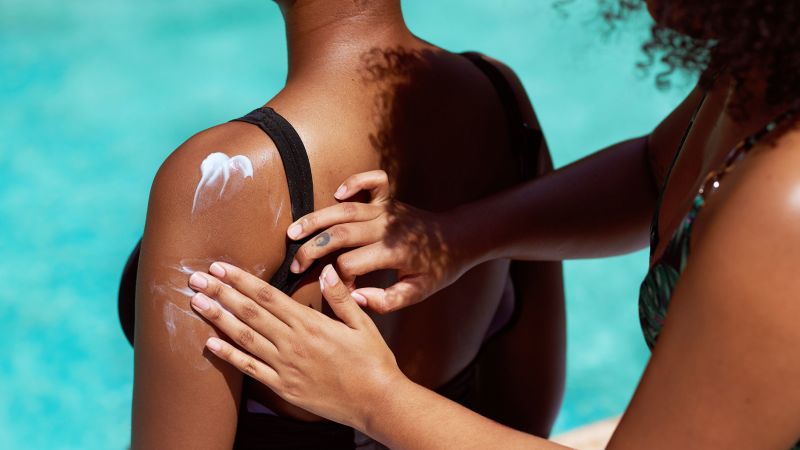Choosing Safe Sunscreens In 2025: A Guide For Parents

Welcome to your ultimate source for breaking news, trending updates, and in-depth stories from around the world. Whether it's politics, technology, entertainment, sports, or lifestyle, we bring you real-time updates that keep you informed and ahead of the curve.
Our team works tirelessly to ensure you never miss a moment. From the latest developments in global events to the most talked-about topics on social media, our news platform is designed to deliver accurate and timely information, all in one place.
Stay in the know and join thousands of readers who trust us for reliable, up-to-date content. Explore our expertly curated articles and dive deeper into the stories that matter to you. Visit Best Website now and be part of the conversation. Don't miss out on the headlines that shape our world!
Table of Contents
Choosing Safe Sunscreens in 2025: A Guide for Parents
Summer is here, and that means sunshine, fun in the sun, and the crucial task of protecting your children's delicate skin. Choosing the right sunscreen can feel overwhelming, with so many options and conflicting information available. This comprehensive guide helps parents navigate the world of sunscreens in 2025, ensuring your kids stay safe and healthy under the summer sun.
Why Sunscreen is Crucial for Children:
Children's skin is significantly more sensitive than adult skin, making them more vulnerable to sun damage. Prolonged sun exposure increases the risk of sunburn, premature aging, and most importantly, skin cancer later in life. The American Academy of Dermatology (AAD) [link to AAD website] strongly recommends daily sunscreen use for children aged six months and older.
Understanding Sunscreen Ingredients: What to Look For (and Avoid):
The effectiveness and safety of sunscreens depend heavily on their ingredients. Here's a breakdown of what to prioritize and what to avoid:
-
Broad-Spectrum Protection: Look for sunscreens labeled "broad-spectrum," meaning they protect against both UVA and UVB rays. UVA rays contribute to aging and skin cancer, while UVB rays cause sunburn.
-
SPF 30 or Higher: The SPF (Sun Protection Factor) indicates how well the sunscreen protects against UVB rays. An SPF of 30 or higher offers good protection. Remember, no sunscreen offers 100% protection, even with high SPF.
-
Mineral Sunscreens (Zinc Oxide and Titanium Dioxide): These are generally considered safer and gentler on sensitive skin, including that of babies and young children. They work by creating a physical barrier on the skin, reflecting UV rays.
-
Chemical Sunscreens (Oxybenzone, Octinoxate, Avobenzone): While effective, some chemical sunscreens have raised concerns about potential health effects. Several studies have linked certain chemical filters to hormonal disruption. [Link to relevant scientific study]. Many parents opt for mineral sunscreens as a precautionary measure. Check for updated regulations and recommendations from your country's health authorities.
-
Avoid Fragrance and PABA: These ingredients can irritate sensitive skin and cause allergic reactions.
Choosing the Right Sunscreen for Your Child's Age and Activity:
-
Babies (6 months+): Opt for mineral-based sunscreens with a high SPF. Apply liberally and reapply frequently. Keep babies in the shade as much as possible.
-
Toddlers and Children: Choose a sunscreen that's easy to apply and reapply, perhaps a spray or stick for convenience. Consider water-resistance for swimming activities.
-
Teens: Encourage teens to choose sunscreens they feel comfortable using to promote consistent application.
Beyond Sunscreen: Other Sun Safety Tips:
- Seek Shade: Limit sun exposure during peak hours (10 a.m. to 4 p.m.).
- Protective Clothing: Dress children in lightweight, long-sleeved shirts, pants, and hats with wide brims.
- Sunglasses: Protect their eyes with sunglasses that block 99-100% of UVA and UVB rays.
Staying Informed and Making the Best Choice:
The landscape of sunscreens is constantly evolving. Stay updated on the latest research and recommendations from reputable sources like the FDA [link to FDA website] and the EWG (Environmental Working Group) [link to EWG website]. Remember, choosing a safe and effective sunscreen is a crucial step in protecting your child's health and well-being. Prioritize ingredients, choose the right SPF, and combine sunscreen with other sun safety measures for optimal protection.
Call to Action: What are your favorite safe sunscreen choices for your children? Share your tips in the comments below!

Thank you for visiting our website, your trusted source for the latest updates and in-depth coverage on Choosing Safe Sunscreens In 2025: A Guide For Parents. We're committed to keeping you informed with timely and accurate information to meet your curiosity and needs.
If you have any questions, suggestions, or feedback, we'd love to hear from you. Your insights are valuable to us and help us improve to serve you better. Feel free to reach out through our contact page.
Don't forget to bookmark our website and check back regularly for the latest headlines and trending topics. See you next time, and thank you for being part of our growing community!
Featured Posts
-
 600 Year Old Tower In China Partially Collapses Tourist Safety Concerns
May 22, 2025
600 Year Old Tower In China Partially Collapses Tourist Safety Concerns
May 22, 2025 -
 Conquer Wordle 1432 Hints And Answer For May 21 2024
May 22, 2025
Conquer Wordle 1432 Hints And Answer For May 21 2024
May 22, 2025 -
 Teens Arrested For Desecrating Santa Rosa Church With Waste
May 22, 2025
Teens Arrested For Desecrating Santa Rosa Church With Waste
May 22, 2025 -
 Ubisoft Milans Big Budget Rayman Game Job Openings Announced
May 22, 2025
Ubisoft Milans Big Budget Rayman Game Job Openings Announced
May 22, 2025 -
 Familys Anguish New Law Undermines Child Protection In Paedophile Cases
May 22, 2025
Familys Anguish New Law Undermines Child Protection In Paedophile Cases
May 22, 2025
Latest Posts
-
 The Chase Community Rallies Around Tim Mc Carthys Posthumous Win
Aug 29, 2025
The Chase Community Rallies Around Tim Mc Carthys Posthumous Win
Aug 29, 2025 -
 October Deportation Hearing For Kilmar Abrego Garcia
Aug 29, 2025
October Deportation Hearing For Kilmar Abrego Garcia
Aug 29, 2025 -
 Deportation Stayed Kilmar Abrego Garcia To Remain Until Early October
Aug 29, 2025
Deportation Stayed Kilmar Abrego Garcia To Remain Until Early October
Aug 29, 2025 -
 Stony Brook Seawolves Vs San Diego State Aztecs 2025 Matchup Preview And Where To Watch
Aug 29, 2025
Stony Brook Seawolves Vs San Diego State Aztecs 2025 Matchup Preview And Where To Watch
Aug 29, 2025 -
 Gaza Conflict Children Bear The Brunt Of Violence One Third Wounded
Aug 29, 2025
Gaza Conflict Children Bear The Brunt Of Violence One Third Wounded
Aug 29, 2025
